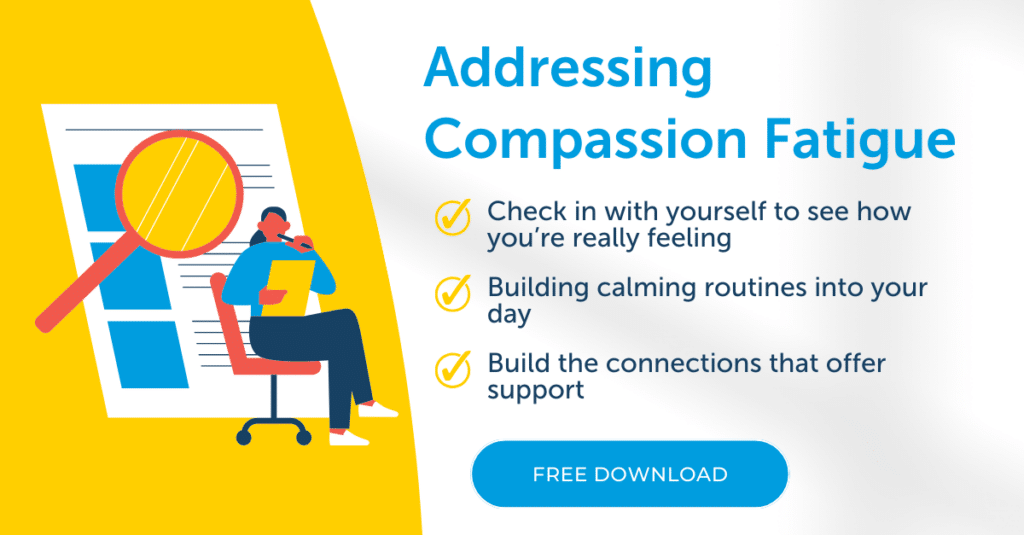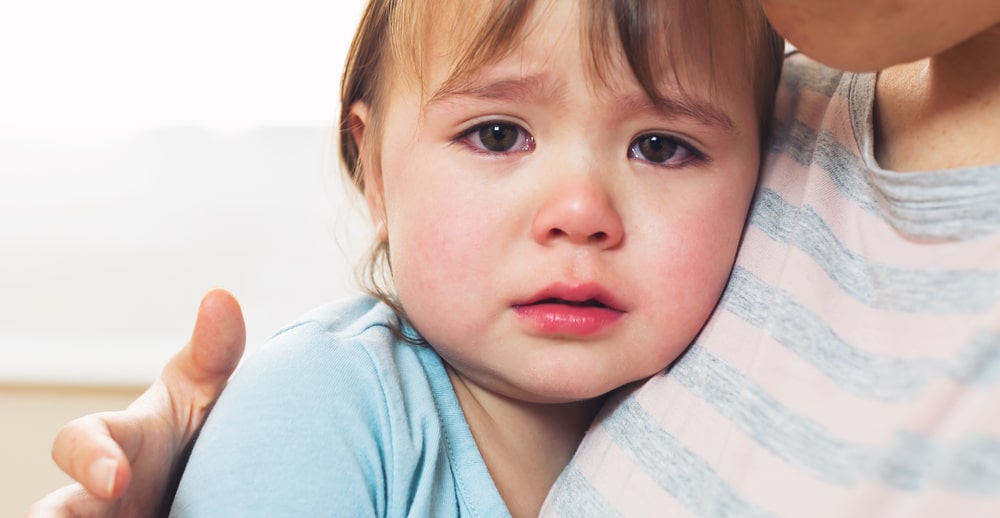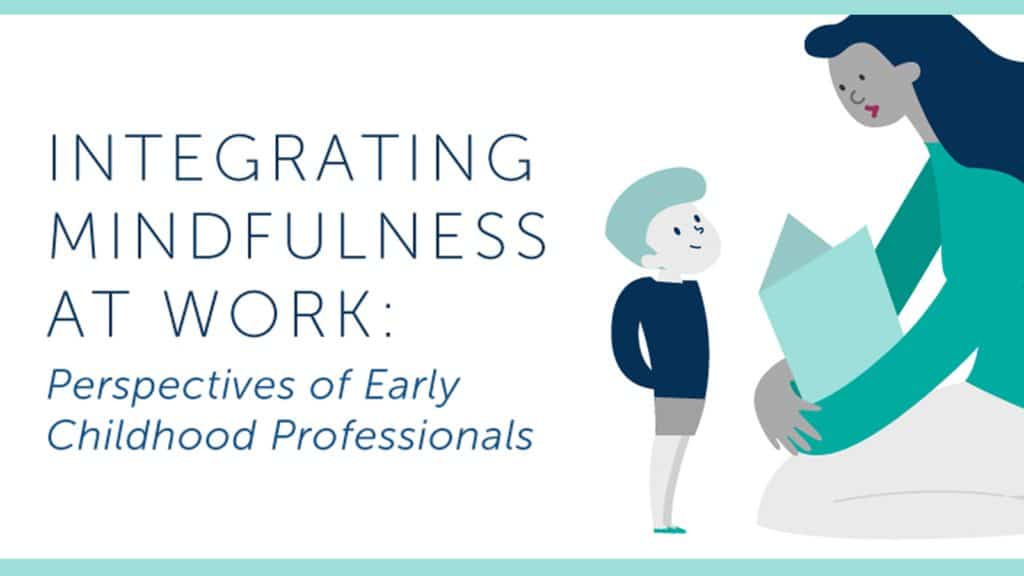
With Expert Insight From:
Summer Jones, IMH-E®
Summer works with ZERO TO THREE’s Military Family Projects team to provide training, consultation, and resources to support both civilian and military programs and professionals in meeting the needs of military and veteran families.
What is compassion fatigue?
To put it simply, compassion fatigue is a form of emotional burnout. When professionals who work with children and their families day after day become affected by the struggles of their clients, they can absorb that pain — it can even manifest as physical symptoms. Compassion fatigue can resemble “secondary trauma” or “vicarious trauma.”
Early childhood professionals care deeply and work tirelessly to help the children and families they come into contact with. That’s why their role is so critical, but it’s also why we see a high risk of compassion fatigue in early childhood professionals.
There are some easily recognizable signs of compassion fatigue in caregivers and early childhood professionals:
- Feeling emotionally exhausted and burnt out by work that matters to you.
- Feeling detached or numb to situations that would once have moved you to feel compassion.
- Feeling helpless or powerless to help children and families.
- Experiencing symptoms such as insomnia, headaches, anxiety, and nausea.
We know early childhood professionals have an essential role in helping babies thrive, but they can’t do it without proper support.

Early childhood professionals are highly susceptible to compassion fatigue:
Working hard daily to meet the unique needs of individual children and their families, early childhood professionals are prime candidates for compassion fatigue. Focusing on the needs of others all day, every day, can lead to what many call burnout. Professionals in any field are at risk of burnout, but compassion fatigue specifically affects those who provide care to others.
Professionals in any field are at risk of burnout, but compassion fatigue specifically affects those who provide care to others.
Each adult working with infants and toddlers has a limited pool of internal resources. This includes both physical and emotional energy.

Think of it as a cup. These adults pour compassion, education, and guidance out onto children and families each and every day from their own cup. Their own cups can also drain as they witness and/or respond to struggles experienced by a child or family. Being a support and advocate for children and families may also trigger the early childhood professional at times. When a child or family’s experience brings up something from their own past or current experiences, they may find themselves exhausted, dysregulated and/or struggling do their job.
To do their job effectively, adults working with infants and toddlers need experiences and relationships that pour into their cup, AND they need opportunities for reflection and restoration. If nobody is pouring into their cup, they can’t do their job effectively — there’s a trickle down effect.
When a preschool teacher skips lunch every day because he doesn’t have enough time to complete his paperwork, it matters. If an early intervention specialist has to pack their day with appointments because their caseload is too high, it matters. When a home visitor is struggling with secondary trauma, it matters. These small moments, which many view as “the norm” in early childhood, add up to a big problem: We are draining our professionals’ cups, and we can’t afford to lose them.

Are you experiencing compassion fatigue?
Download our guide to signs and symptoms and get tips and suggestions to address compassion fatigue in early childhood professionals.
Working together to address burnout and compassion fatigue in early childhood professionals:
Educate professionals. While most early childhood professionals know what compassion fatigue feels like, they may not be aware that’s what they are actually experiencing. Through training and robust supervision programs, we can help professionals learn how to monitor their mental health — and ask for help before it’s too late.
Provide resources. It’s not enough to just teach our professionals what compassion fatigue means. That’s just step one. It’s also not enough to provide them with some prompts and tell them to fit reflection into a packed work day. Preventing compassion fatigue is a team effort. We need to provide the space and resources for mindfulness and reflection through individual supervision, training, and group events.
Engage in reflective practice. One of the best tools we have to fight compassion fatigue is reflective practice. Reflective practice is a tool that invites us to pause and slow down to become aware of thoughts, feelings and reactions that arise in everyday interactions. When supervisors engage in reflective practice with their staff, the risk of compassion fatigue is reduced.
Elevate the early childhood field. Advocate for state and federal investments in early education and infant and early childhood mental health to ensure adequate resources and compensation for the workforce.




